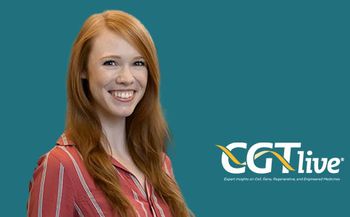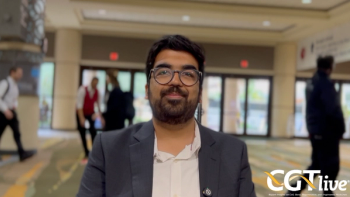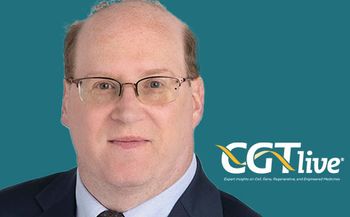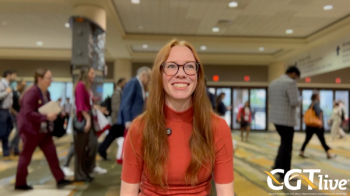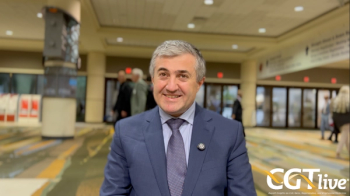
UCSF Tests Lentiviral Vector-Based Gene Therapy for Artemis-Deficient SCID in Phase 1/2 Trial
The open-label trial, which launched on May 31, 2018, will treat up to 24 patients who have been diagnosed with ART-SCID.
University of California, San Francisco (UCSF) Children's Hospital is currently evaluating IND1711, an investigational autologous gene-corrected hematopoeitic stem cell therapy, for the treatment of Artemis-deficient severe combined immunodeficiency (ART-SCID) in a phase 1/2 clinical trial (NCT03538899).1 For this installment of Clinical Trials in Progress, CGTLive® has decided to take a closer look at this active study.
IND1711 consists of a lentiviral vector referred to as AProArt that is used to deliver a normal copy of the disease-targeted DCLRE1C gene to patients’ stem cells outside the body; the cells are then reinfused into the patient following subablative busulfan conditioning. The open-label trial, which launched on May 31, 2018, will treat up to 24 patients who have been diagnosed with ART-SCID. Morton Cowan, MD, medical director of the UCSF Pediatric Cell Therapy Laboratory, is serving as the principal investigator for the trial. According to the clinicaltrials.gov page for the study, which was most recently updated on January 13, 2025, the trial is taking place exclusively at UCSF Children's Hospital, and is actively recruiting patients. It has an estimated completion date of June 2038.
The study does not include a formal control group. The first 6 patients enrolled are to be monitored intensively for safety and long-term safety monitoring will be carried out for 15 years after treatment. Patients who weigh 7.5 kilograms or less at the time of treatment or have previously had cytokine mobilization conducted unsuccessfully will have their stem cells harvested from the bone marrow. On the other hand, patients who weigh more than 7.5 kg at the time of treatment will have cytokine-mobilized peripheral blood stem cells harvested. The CliniMACS® CD34 Reagent System cell sorter device will be utilized to isolate CD34 cells. Patients who on 3 independent analyses show an absolute neutrophil count is of less than 200/µl or platelets less than 20,000/µl after42 days posttreatment may undergo infusion of backup cells or allogeneic hematopoeitic stem cell transplant. Furthermore, those participants who have low vector copy number, evidence of clinically inadequate reconstitution, or show other indications of a clinically inadequate response will be able to be treated with a repeat infusion of IND1711. Low-dose busulfan, other conditioning, or no conditioning may be used for these repeat infusions.
The trial’s primary end point is patients’ overall survival in a time frame of 24 months. The trial’s secondary end points are the number of patients who achieve B-cell immune reconstitution, the number of patients who achieve T-cell immune reconstitution, and event free survival. The time frame for each of these secondary end points is 24 months. The trial features a large number of additional end points that will be assessed in various time frames. These include, but are not limited to, the adverse event profile of the study treatment; the number of patients that have B-cell reconstitution beyond 24 months posttreatment; the efficacy of targeting low exposure busulfan in infants and children; and T-cell and B-cell repertoire diversity.
The study is open to patients aged 2 months and older at the time of initiation of busulfan conditioning who have a clinical diagnosis of typical or leaky ART-SCID. Patients who are newly diagnosed must demonstrate confirmed Artemis deficiency and meet at least 1 of the following immunologic criteria: a CD3 T-cell count of fewer than 300 autologous cells per µL, the presence of spontaneous maternal T-cell chimerism, or a CD3 count greater than 300/μL accompanied by restricted T-cell receptor Vb diversity, defined as having 18/24 or fewer polyclonal families. In addition, newly diagnosed patients classified as having leaky ART-SCID must show a CD45 cell response to mitogens (PHA) less than 50% of the lower limit of normal range for the lab. Patients with a prior diagnosis of ART-SCID who have previously undergone allogeneic hematopoietic stem cell transplant unsuccessfully must be at least 3 months posttransplant with no evidence of engraftment of donor cells (excluding maternal cells); alternatively if they have donor engraftment but meet several predefined conditions outline by the study protocol, they may be eligible. Participants must additionally have written informed consent.
Patients must not have prior exposure to high-dose busulfan, defined as a cumulative dose of ≥10 mg/kg or average exposure ≥40 mg•hr/L. However, patients may still be eligible if the combined busulfan exposure (past and planned) is predicted to remain at or below a cumulative area under the curve (AUC) of 60 mg•hr/L. Newly diagnosed patients must not have a medically eligible HLA-identical sibling with normal immune function available for bone marrow donation. Informed consent must be obtained in accordance with Institutional Review Board (IRB) guidelines.
Patients who have a prior history of veno-occlusive disease of the liver will be excluded from participation, as will patients who at the time busulfan conditioning is planned to begin show 3 times the upper limit of normal on lab results on liver function tests and/or show a total bilirubin of more than 1.50 mg/dl. Furthermore, newly diagnosed patients with an available and medically eligible HLA-matched sibling donor are not eligible to participate. Additional exclusion criteria for the study include evidence of HIV infection; inability to tolerate general anesthesia, bone marrow harvest, peripheral blood stem cell apheresis, or central venous catheter placement; presence of a serious comorbid condition likely to limit survival to less than 4 months; and pregnancy. Patients may be excluded if there are significant social factors suggesting that adherence to the study protocol, required medical care, and follow-up cannot be maintained. Patients may also be deemed inelgible as a result of other conditions that are deemed to contraindicate the study treatment or participation by the investigators.
Notably, early results from the clinical trial were published in Biology of Blood and Marrow Transplantation in March 2020.2 According to the paper’s abstract, 3 newly diagnosed patients who were treated with IND1711 and evaluable showed presence of gene-corrected CD3, CD4, CD4+45RA+CCR7+, CD8, and CD19 cells after treatment. Furthermore, the 3 patients were out of isolation and in an outpatient setting. Although, 2 of the 3 patients experienced cases of autoimmune hemolytic anemia (AIHA) after treatment; in 1 patient the case had resolved by18 months of age and in the other patient the case did not require therapy. It was also noted that 1 patient had rhinovirus at presentation that resolved after T-cell reconstitution and that 1 patient experienced infections with cytomegalovirus and rotavirus after discharge but recovered from these cases. No serious adverse events caused by busulfan were reported.
“Infusion of AProArt-transduced autologous CD34+ cells into ART-SCID infants pretreated with very low exposure busulfan has resulted in multilineage engraftment of transduced cells with reconstitution of T-cell immunity and evidence for B-cell immune development,” first author Cowan and colleagues wrote in the abstract’s conclusion.2 “AIHA, the only complication, has resolved upon development of T-cell immunity.
REFERENCES
1. Clinicaltrials.gov. Autologous gene therapy for Artemis-deficient SCID. Website. Accessed July 21, 2025. https://clinicaltrials.gov/study/NCT03538899?term=NCT03538899&rank=1
2. Cowan MJ, Yu J, Facchino J, et al. Early outcome of a phase i/ii clinical trial (Nct03538899) of gene-corrected autologous cd34+ hematopoietic cells and low-exposure busulfan in newly diagnosed patients with artemis-deficient severe combined immunodeficiency(Art-scid). Biology of Blood and Marrow Transplantation. 2020;26(3):S88-S89. Doi: 10.1016/j.bbmt.2019.12.589
Newsletter
Stay at the forefront of cutting-edge science with CGT—your direct line to expert insights, breakthrough data, and real-time coverage of the latest advancements in cell and gene therapy.

